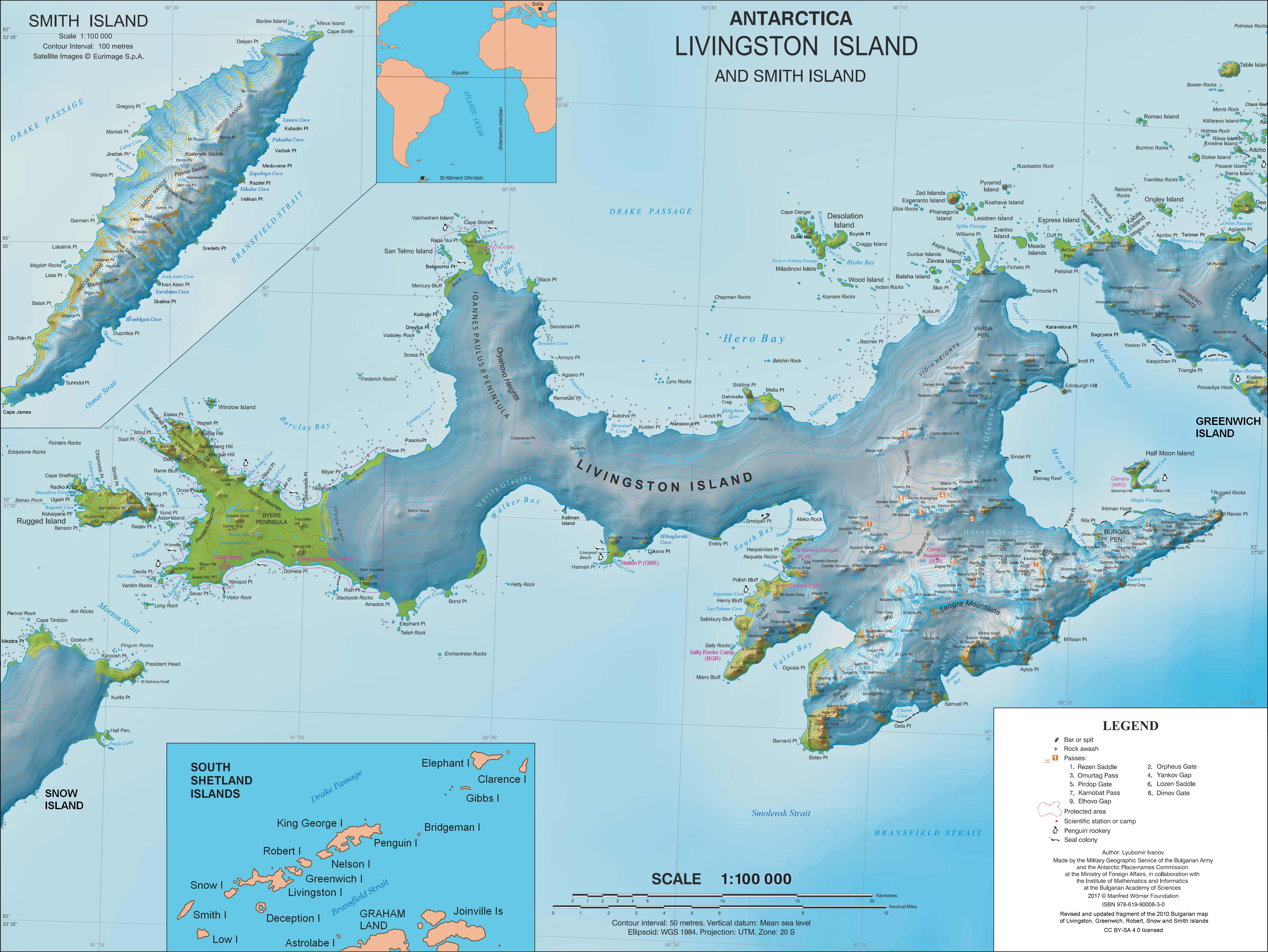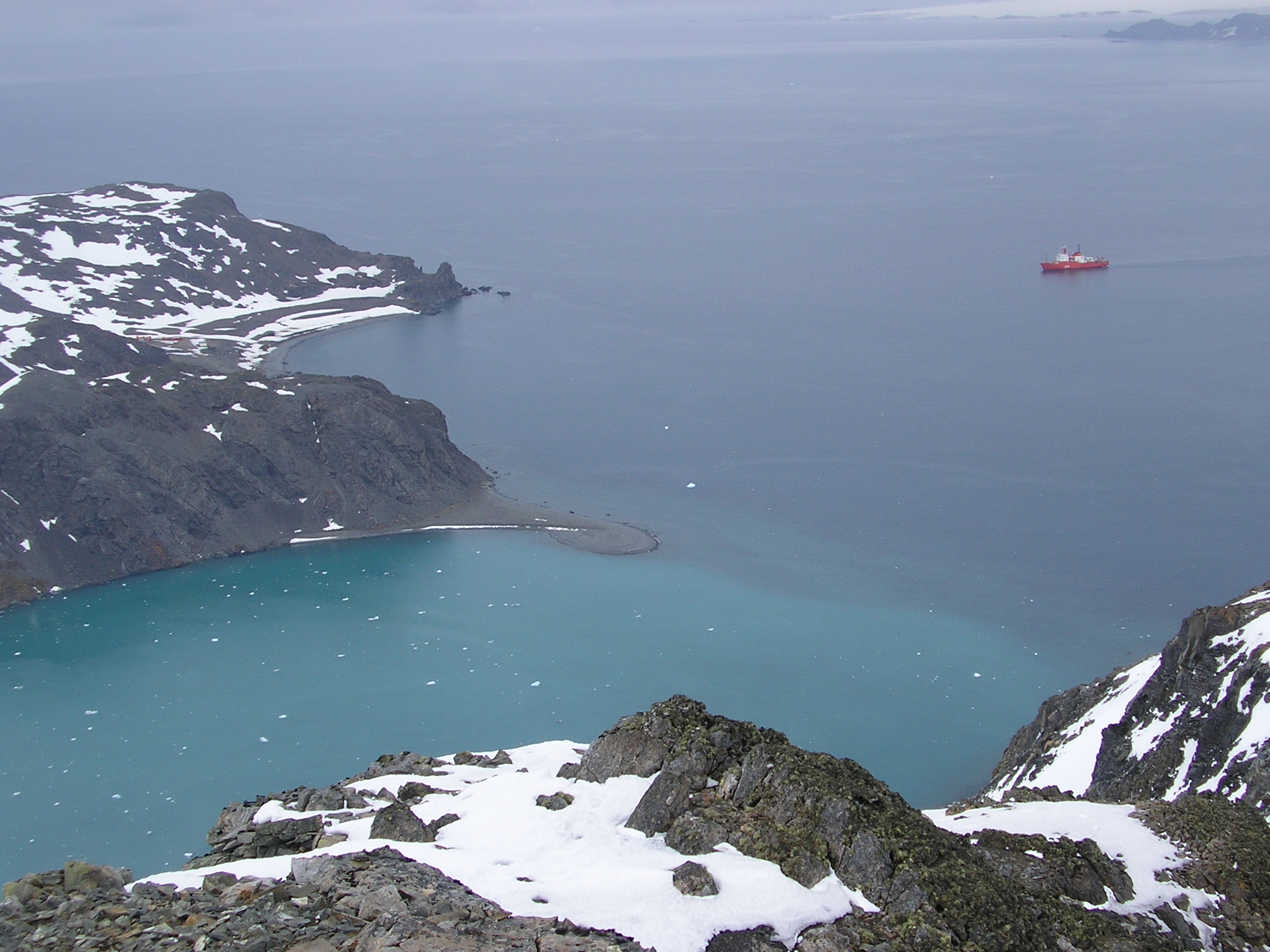|
Española Cove
Española Cove is a 1.2 km wide embayment indenting for 250 m the northwest coast of Hurd Peninsula, Livingston Island in the South Shetland Islands, Antarctica. It is part of South Bay entered between Ballester Point and Polish Bluff. The cove is used for the transfer of people and cargo to the Spanish base Juan Carlos I situated at its head. The area was frequented by early 19th century sealers Sealer may refer either to a person or ship engaged in seal hunting, or to a sealant; associated terms include: Seal hunting * Sealer Hill, South Shetland Islands, Antarctica * Sealers' Oven, bread oven of mud and stone built by sealers around 1800 ... operating from nearby Johnsons Dock. The feature was mapped and named by the Spanish Antarctic Expedition in 1991. Location The cove's midpoint is located at which is 1.83 km south-southwest of Hespérides Point and 7.25 km north-northeast of Miers Bluff (British mapping in and 1968, detailed Spanish mapping in 1 ... [...More Info...] [...Related Items...] OR: [Wikipedia] [Google] [Baidu] |
Spain
Spain, or the Kingdom of Spain, is a country in Southern Europe, Southern and Western Europe with territories in North Africa. Featuring the Punta de Tarifa, southernmost point of continental Europe, it is the largest country in Southern Europe and the fourth-most populous European Union member state. Spanning across the majority of the Iberian Peninsula, its territory also includes the Canary Islands, in the Eastern Atlantic Ocean, the Balearic Islands, in the Western Mediterranean Sea, and the Autonomous communities of Spain#Autonomous cities, autonomous cities of Ceuta and Melilla, in mainland Africa. Peninsular Spain is bordered to the north by France, Andorra, and the Bay of Biscay; to the east and south by the Mediterranean Sea and Gibraltar; and to the west by Portugal and the Atlantic Ocean. Spain's capital and List of largest cities in Spain, largest city is Madrid, and other major List of metropolitan areas in Spain, urban areas include Barcelona, Valencia, Seville, ... [...More Info...] [...Related Items...] OR: [Wikipedia] [Google] [Baidu] |
Miers Bluff
Miers Bluff is the point forming the southwest extremity of Hurd Peninsula, the southeast side of the entrance to South Bay and the northwest side of the entrance to False Bay, on Livingston Island in the South Shetland Islands, Antarctica. The name "Elephant Point", given by Robert Fildes in 1820–22 to another feature, has been for a number of years applied in error to this bluff. It is now approved as originally intended and a new name has been substituted for the feature here described. The point is named after John Miers, British engineer and botanist who travelled to Chile in 1818 and was responsible for the publication in 1820 of the first chart of the South Shetland Islands, based on the work of William Smith. Location The point is located at () which is northwest of Barnard Point, southeast of Hannah Point and southwest of Napier Peak (British mapping in 1968, detailed Spanish mapping in 1991, and Bulgarian mapping in 2005 and 2009). The U.S. Geological Survey ... [...More Info...] [...Related Items...] OR: [Wikipedia] [Google] [Baidu] |
Hespérides Point
Hespérides Point () is a rocky point of land projecting into South Bay north-northwest of Johnsons Dock, Livingston Island in the South Shetland Islands, Antarctica and forming the southwest side of the entrance to Emona Anchorage. Surmounted by Hesperides Hill. The area was visited by 19th century sealers operating from nearby Johnsons Dock. The feature is named after the Spanish ocean exploration ship BIO Hesperides BIO ''Hespérides'' (A-33), is a Spanish polar research vessel. She was built in 1990, by Bazán Shipyards of Cartagena, Spain. ''Hespérides'' is used to service the research bases in Antarctica, mainly the Spanish Juan Carlos I Antarctic Base, .... Location The point is located at which is 12.36 km east-northeast of Hannah Point, 3.7 km southeast of Smolyan Point and 1.59 km north of Ballester Point (British mapping in 1968, detailed Spanish mapping in 1991 and Bulgarian mapping in 1996, 2005 and 2009). Maps * Isla Livingston: Pe ... [...More Info...] [...Related Items...] OR: [Wikipedia] [Google] [Baidu] |
Seal Hunting
Seal hunting, or sealing, is the personal or commercial hunting of Pinniped, seals. Seal hunting is currently practiced in nine countries: Canada, Denmark (in self-governing Greenland only), Russia, the United States (above the Arctic Circle in Alaska), Namibia, Estonia, Norway, Finland and Sweden. Most of the world's seal hunting takes place in Canada and Greenland. The Canadian Fisheries and Oceans Canada, Department of Fisheries and Oceans (DFO) regulates the seal hunt in Canada. It sets quotas (total allowable catch – TAC), monitors the hunt, studies the seal population, works with the Canadian Sealers' Association to train sealers on new regulations, and promotes sealing through its website and spokespeople. The DFO set harvest quotas of over 90,000 seals in 2007; 275,000 in 2008; 280,000 in 2009; and 330,000 in 2010. The actual kills in recent years have been less than the quotas: 82,800 in 2007; 217,800 in 2008; 72,400 in 2009; and 67,000 in 2010. In 2007, Norway repo ... [...More Info...] [...Related Items...] OR: [Wikipedia] [Google] [Baidu] |
Juan Carlos I Antarctic Base
Juan Carlos I Antarctic Base, named after the former king of Spain, Juan Carlos I (), is a seasonal (November to March) scientific station operated by Spain, opened in January 1988. Situated on Hurd Peninsula, Livingston Island in the South Shetland Islands, Antarctica. The base is controlled by the Marine Technology Unit of the Spanish National Research Council and is 20 miles away from the Spanish Antarctic base Gabriel de Castilla Base, Gabriel de Castilla. The base has undergone several renovations, the closest remodeling was completed in 2018 and it was inaugurated by the Ministry of Science (Spain), Science Minister, Pedro Duque, on February 2, 2019. This latest renovation involved the construction of "new facilities [that] have allowed it to double its capacity, up to 51 people, and increase the space available for scientific and technical personnel in laboratories." Location The base is on the coast of Española Cove, South Bay, Livingston Island, South Bay, in the northe ... [...More Info...] [...Related Items...] OR: [Wikipedia] [Google] [Baidu] |
Polish Bluff
Polish Bluff () is a point forming the southwest side of the entrance to Española Cove and the northeast side of the entrance to Argentina Cove in Hurd Peninsula, Livingston Island in the South Shetland Islands, Antarctica. The area was visited by early 19th century sealers operating from nearby Johnsons Dock. The feature was charted and named by the Spanish Antarctic Expedition in 1988 in appreciation of the Polish logistic support in the building of Juan Carlos I Antarctic Base. Location The point is located at which is 1.59 km southwest of Ballester Point, 1.27 km northeast of Henry Bluff and 4. 47 km southwest of Ereby Point (British mapping in 1968, detailed Spanish mapping in 1991, Bulgarian mapping in 1996, 2005 and 2009). Maps Isla Livingston: Península Hurd.Mapa topográfico de escala 1:25000. Madrid: Servicio Geográfico del Ejército, 1991. (Map reproduced on p. 16 of the linked work) * L.L. Ivanov. Livingston Island: Central-Eastern Region. ... [...More Info...] [...Related Items...] OR: [Wikipedia] [Google] [Baidu] |
Johnsons Dock
Johnsons Dock is a sheltered 500 m wide cove indenting for 900 m the northwest coast of Hurd Peninsula on Livingston Island in the South Shetland Islands, Antarctica. It is part of South Bay entered north of Ballester Point. Surmounted by Charrúa Ridge on the northeast. The cove was frequented by early 19th century sealers. The feature is probably named after Captain Thomas Johnson, Master of the British brig ''Mellona'' or Captain Robert Johnson, Master of the American sealing ship ''Jane Maria'' and of the schooner ''Wasp'', who visited the South Shetland Islands in the first seasons after their discovery. Location The cove's midpoint is located at which is 1.9 km south-southeast of Hespérides Point Hespérides Point () is a rocky point of land projecting into South Bay north-northwest of Johnsons Dock, Livingston Island in the South Shetland Islands, Antarctica and forming the southwest side of the entrance to Emona Anchorage. Surmoun .... British ear ... [...More Info...] [...Related Items...] OR: [Wikipedia] [Google] [Baidu] |
Ballester Point
Ballester Point (, ‘Nos Ballester’ \'nos ba-'les-ter\) is a point forming the south side of the entrance to Johnsons Dock and the northeast side of the entrance to Española Cove in Hurd Peninsula, Livingston Island in the South Shetland Islands, Antarctica. The area was visited by early 19th century sealers operating from Johnsons Dock. The feature is named for Antonio Ballester, a doyen of the Spanish Antarctic Program. Location The point is located at which is 4.95 km southwest of Ereby Point, 1.55 km south of Hespérides Point and 7.6 km north-northeast of Miers Bluff. (British mapping in 1822 and 1968, detailed Spanish mapping in 1991, Bulgarian mapping in 1996, 2005 and 2009). Maps Isla Livingston: Península Hurd.Mapa topográfico de escala 1:25000. Madrid: Servicio Geográfico del Ejército, 1991. (Map reproduced on p. 16 of the linked work) * L.L. Ivanov. Livingston Island: Central-Eastern Region. Scale 1:25000 topographic map. Sofia: Antarctic ... [...More Info...] [...Related Items...] OR: [Wikipedia] [Google] [Baidu] |




